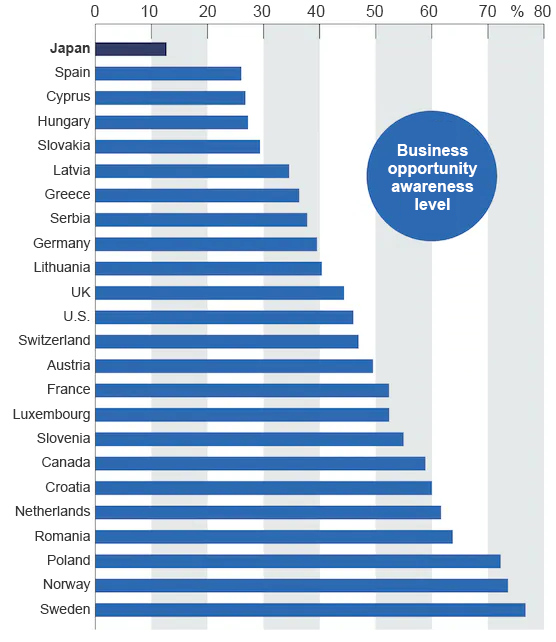The critical factor in raising economy-wide productivity through the redistribution effect is what is known as “growth potential.”
◆◆◆
What would happen if the high-productivity company’s workforce size were reduced to 120 workers instead of the 199 in the abovementioned case? Because the growth potential of the high-productivity company to which resources are redistributed would be limited, the contraction of the low productivity company would be slower, with the result that benefits for economy-wide productivity would be smaller. Conversely, if the company to which resources are redistributed is a superstar performer with a workforce of tens of thousands of employees, the growth potential is large and as a result, the benefits for economy-wide productivity are also great.
The fact that large companies’ contributions to the entire economy are significant is attracting attention as a factor in explaining the slowdown of productivity in mature economies. According to a study by Yoshihiko Hogen, Hiroshi Miura and Koji Takahashi at the Bank of Japan, that applies to Japan as well.
Growth potential is very important in the context of policies promoting startup businesses and is considered to significantly affect entrepreneurial spirit if time-factor effects are taken into account. In a high-risk environment where most companies disappear within five years of their founding, few entrepreneurs and investors are likely to take the associated risks if all that they can expect to achieve is to create a company with a workforce of 100 employees or so. Typically, entrepreneurs take such risks because of their desire to make the world a better place by realizing their ideas and ideals and because of the chance to grow their business into a company with a workforce of tens of thousands or even more than 100,000 employees.
Under the standard macroeconomic framework, growth potential affects the number of startups and contributes to economic growth. This is because jobs created as a result of a rapid increase in the number of startups account for a large portion of the overall number of new jobs created on an economy-wide basis, a point that is mentioned in the five-year startup growth plan. If we see more and more cases of successful transformation from a startup to a superstar performer, it could have an impact on Japan’s “business opportunity awareness level”, which is said to be low compared with the levels in other countries (see the figure below).

(Source) Global Entrepreneurship Monitor (GEM)
Growth potential also has a significant impact on the macroeconomic effects of startup promotion policy measures. It is natural that the same resources can achieve greater policy effects when they are allocated to a company with a workforce of 10,000 employees or so compared with when they are allocated to a company with a workforce of just around 100 employees. Whether or not startup support measures lead to economic growth depends on the ultimate company size and productivity level that can be achieved—that is, growth potential—as a result of the measures, even though only a handful of companies may grow into superstar performers with large workforces. That has been shown by a study conducted by Associate Professor Yingfang Zhou of the National University of Singapore and myself.
In this respect, Japanese companies’ growth potential is presumed to be small compared with U.S. companies’ potential. According to a study by Koji Nakamura, Sohei Kaihatsu, and Tomoyuki Yagi at the Bank of Japan, in the United States, there is a broad base of high-productivity companies, while in Japan, the productivity distribution of companies is concentrated around the average productivity level, which means that there is not a broad base of high-productivity companies.
One factor that may skew growth potential downward is a rigidity particular to large companies. In the U.S., restrictions on information disclosure and other listing regulations keep listed companies from entering into new investments in order to keep earnings results in line with investors’ expectations, and it has been found that this tendency lowers economic growth at the macro level (a study by Assistant Professor Stephen Terry of Boston University).
It is commonly understood in the United States that as companies become older, they become more rigid in terms of organization, cost structure, and investment decisions. In Japan, too, it is necessary to check whether or not there are institutional factors that inhibit large companies’ growth. It is also essential to pay attention to market mechanisms that promote business portfolio realignment, such as M&A (merger and acquisition) activity in terms of measures to strengthen the reallocation of resources.
However, while superstar performers may become important innovators, their presence could also inhibit competition or otherwise affect the market environment negatively. Policy planners need to keep a close watch on negative aspects of inter-firm disparity, but in Japan and Europe, which have not given birth to “big tech” companies like Google, it is better to deal with negative consequences as they arise than to waste time on discussing what may happen.
>> Original text in Japanese
* Translated by RIETI.
June 21, 2023 Nihon Keizai Shimbun


